
Poaceae or Gramineae is a large and nearly ubiquitous family of monocotyledonous flowering plants known as grasses. It includes the cereal grasses, bamboos and the grasses of natural grassland and species cultivated in lawns and pasture. The latter are commonly referred to collectively as grass.
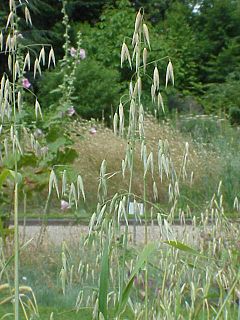
Avena is a genus of Eurasian and African plants in the grass family. Collectively known as the oats, they include some species which have been cultivated for thousands of years as a food source for humans and livestock. They are widespread throughout Europe, Asia and northwest Africa. Several species have become naturalized in many parts of the world, and are regarded as invasive weeds where they compete with crop production. All oats have edible seeds, though they are small and hard to harvest in most species.
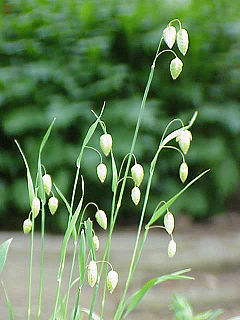
Briza is a genus of annual and perennial plants in the grass family, native to northern temperate regions of Eurasia, North Africa, and certain islands in the Atlantic.

Paspalum is a genus of plants in the grass family.
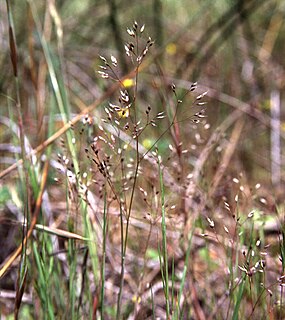
Aira is a genus of Old World plants in the grass family, native to western and southern Europe, central and southwest Asia, plus Africa.

Poa is a genus of about 500 species of grasses, native to the temperate regions of both hemispheres. Common names include meadow-grass, bluegrass, tussock, and speargrass. Poa (πόα) is Greek for "fodder". Poa are members of the subfamily Pooideae of the family Poaceae.

Panicum (panicgrass) is a large genus of about 450 species of grasses native throughout the tropical regions of the world, with a few species extending into the northern temperate zone. They are often large, annual or perennial grasses, growing to 1–3 m tall.

Andropogon is a widespread genus of plants in the grass family, native to much of Asia, Africa, and the Americas as well as southern Europe and various oceanic islands.
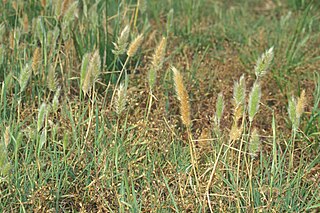
Polypogon is a nearly cosmopolitan genus of plants in the grass family, commonly known beard grass or rabbitsfoot grass.
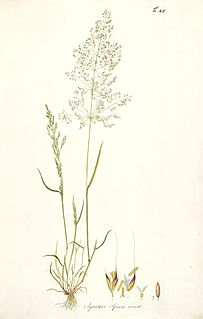
Apera is a small genus of annual grasses, known commonly as silkybent grass or windgrass. They are native to Europe, North Africa and parts of Asia but have been introduced and naturalized in much of North and South America.

Themeda is a genus of plants in the grass family native to Asia, Africa, Australia, and Papuasia. There are about 18 to 26 species, many of which are native to Southeast Asia.
Zingeria is a genus of Asian and European plants in the grass family. Their native range covers the Black Sea and eastern Mediterranean regions from Romania to Kazakhstan.

Eremopyrum is a genus Eurasian and North African plants in the grass family. One species, Eremopyrum triticeum has become widely established as a weed in parts of North America.
Loliolum is a genus of Asian and North African plants in the grass family. The only known species is Loliolum subulatum, native to Turkey, Caucasus, the Middle East, Iran, Pakistan, Afghanistan, Central Asia, and Morocco.

Scolochloa is a genus of grasses in the family Poaceae / Gramineae, now containing a single species, Scolochloa festucacea. Common rivergrass is a common name for the species. Scolochloa festucacea grows in Europe, temperate Asia, and North America. Its culms are erect and 100–150 centimetres (39–59 in) in height; its leaf blades are 15–30 cm (5.9–11.8 in) long and 5–10 mm (0.20–0.39 in) wide.
Henrardia is a genus of Asian plants in the grass family.
Lasiurus is a genus of Asian and African plants in the grass family, Poaceae, found primarily in arid regions. The only known species is Lasiurus scindicus, native to drier regions of northern Africa and southwestern Asia, from Morocco and Mali to India.

Mibora, or sandgrass, is a genus of European and North African plants in the grass family.
Rhizocephalus is a genus of plants in the grass family, Poaceae. The only known species is Rhizocephalus orientalis, native to Afghanistan, Armenia, Georgia, Iran, Iraq, Israel, Jordan, Lebanon, Palestine, Syria, AsiaticTurkey, and Uzbekistan.
GrassBase is a web-based database of grasses, continually maintained and updated by the Royal Botanic Gardens, Kew.














